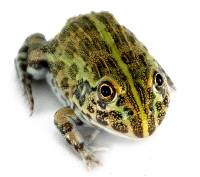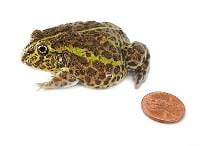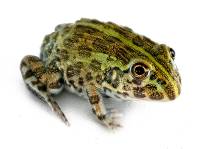Josh's Frogs
Pixie frog Care Sheet
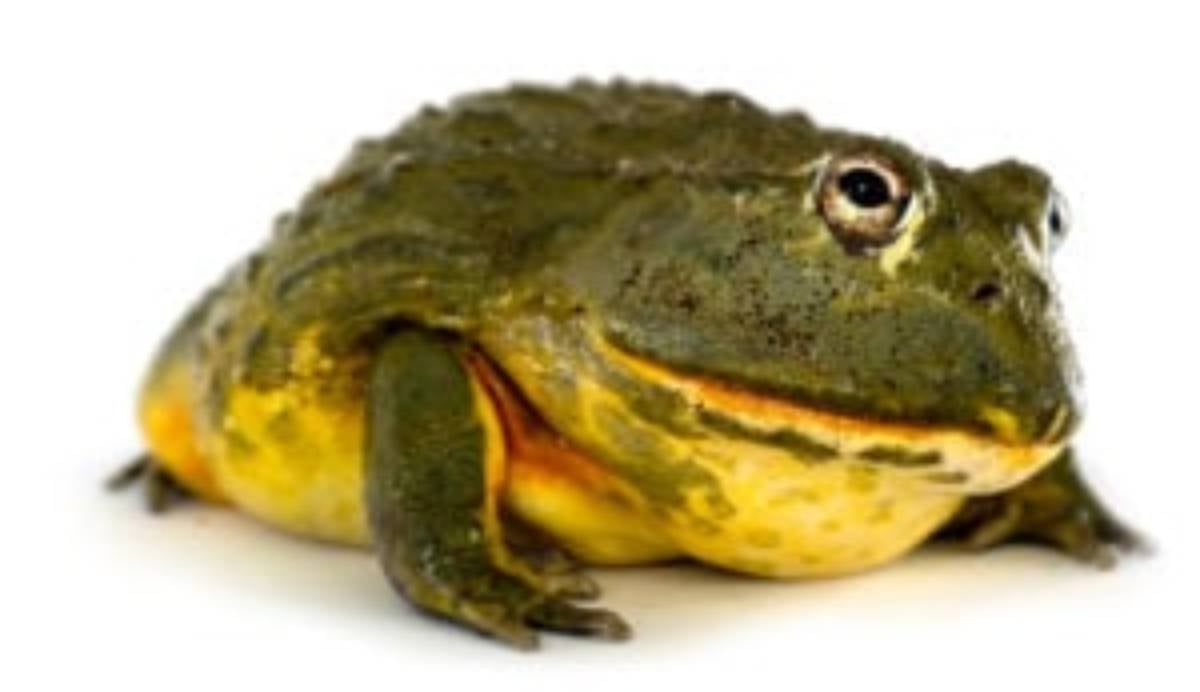
Naming
Pyxicephalus adspersus is known commonly as the Giant African Bullfrog or simply Pixie Frog (sometimes also spelled Pyxie Frog).
Housing
The set up for these large frogs is very simple. They are fairly inactive, so a single frog can be kept in a 15 gallon or larger tank. Moist coco fiber is an ideal substrate; there should be enough substrate to allow the frog to completely bury itself. Pixie frogs will also utilize a large, easy to enter water dish for soaking.
If you're looking for a simple option for housing a new baby pixie frog, check out our Pixie Frog Tankless 10 Gallon Kit!
Habitat
Giant African Bullfrogs are native to the savannahs of sub-Saharan Africa. They are best kept between 75-90 degrees F with a 5 degree drop at night. Coco fiber should be kept moist but not soaking and a vented or screen lid should be used. A low wattage incandescent light can be placed at one side of the screen lid to reach desired temperatures. If kept too dry, these frogs may enter a state of dormancy called aestivation while they wait for the “upcoming rainy season”.
Feeding
Pixie frogs are voracious eaters and do best with a wide variety of food items. Juveniles should be fed appropriately sized crickets daily. They will soon grow into monsters that can eat larger prey 2-3 times per week. At Josh’s Frogs, our adult Pixie frogs eat adult crickets and ¾” . They can also be fed earthworms, hornworms, silkworms, and the occasional thawed frozen rodent.
Appearance and Size
Pyxicephalus adspersus is the second largest frog after the Goliath Frog, Conraua goliath. Like most species of frogs, the males and females show differences in size. Unlike most frogs, however, the males in this species tend to grow much larger than the females instead of the other way around. Males can reach 4.5-10 inches/11.5-25 cm SVL compared to females: 3.5-5.5 inches/9.0-14 cm. Both sexes are an olive green color with white undersides and orange where the limbs meet the body. Males tend have yellow around the orange coloring often extending down their sides and up the sides of their throat.
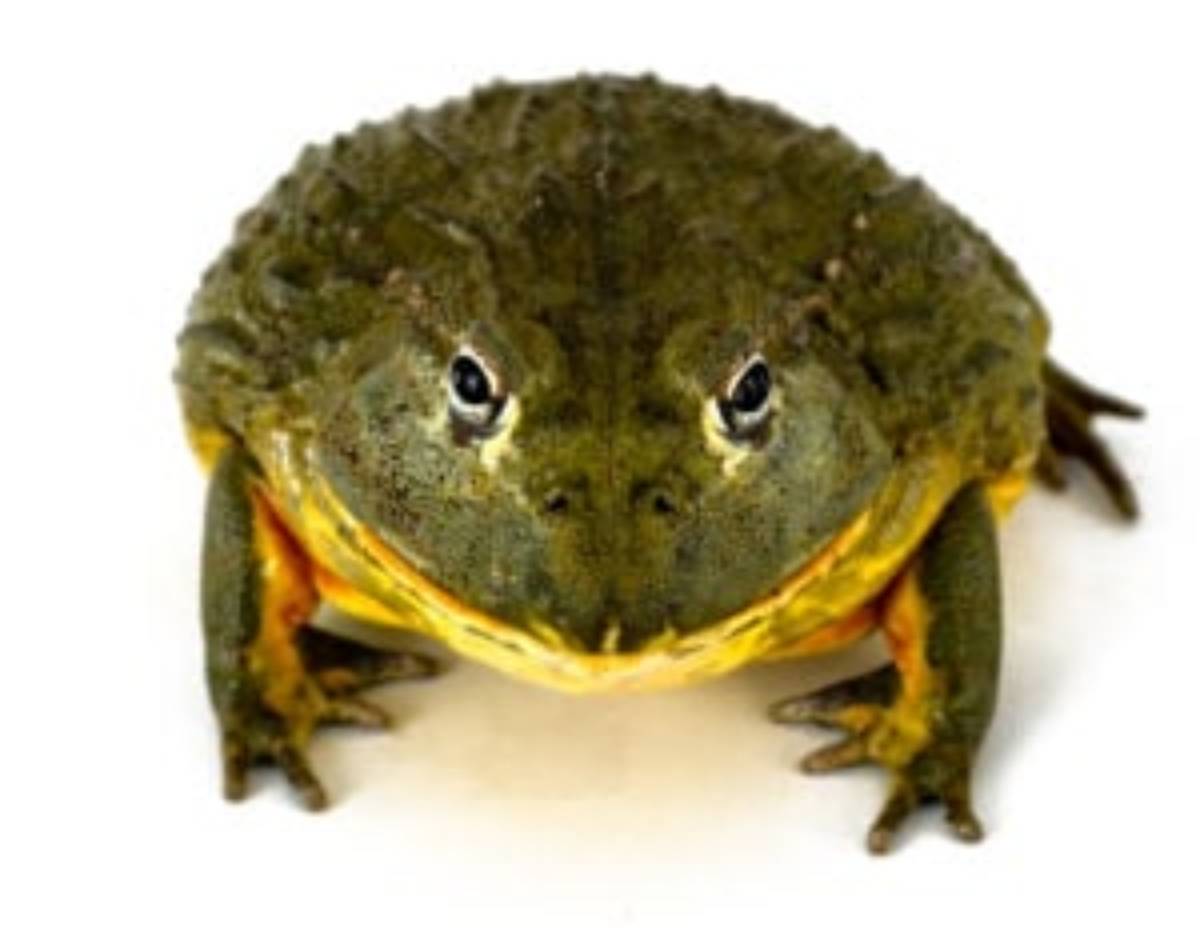
Socialization
Males of this species should be housed alone as they can be territorial and aggressive toward other males. Females can be housed in groups with no problems. Care should be taken when handling, as these frogs have powerful legs and are not very agile if they were to be accidentally dropped. In captivity, they generally have an even temperament but are known to hiss when provoked.
Lifespan
Pixie frogs can be expected to live 15-25 years under optimal conditions, and have been known to live over 30 years.
Sexing
The size and coloration differences are generally reliable once the frogs reach approximately 4 inches. Males also have a proportionally larger head and have a low rumbling call. Females do not call.
Breeding
Breeding Pyxicephalus adspersus in captivity is not a common occurrence. The best way to go about it would be to mimic the seasonality of their natural environment. Give well fed, well hydrated, and overall healthy frogs a 3-4 month dry period with no misting and reduced water in the water bowl or even no water bowl to allow for aestivation. Next, rehydrate them with heavy misting and pouring water into their substrate. Once the frogs have shed the layers of skin that they have built up as a water retaining “cocoon,” begin feeding heavily for a few days to a week and then place in a large rain chamber with approximately 3 inches of water and surfaces for the frogs to exit the water. Water level should not be kept too much higher than this because amplexus takes place while standing on the bottom and fertilization of eggs takes place above water. Multiple males being placed in the rain chamber simultaneously could result in aggression and injuries and is therefore not recommended. The introduction to the rain chamber should be timed with a low pressure weather event in order to increase the chance of spawning.
Tadpole Care
If all goes well, female frogs can lay up to 4,000 eggs which will hatch within three days in 75-80 degree water. Tadpoles are omnivorous and can be fed a variety of flake food, including Josh’s Frogs tadpole food. Metamorphosis can take place as quickly as 30 days at which point froglets should be kept individually in order to prevent any chance of them injuring each other.
[button-green url="https://new.joshsfrogs.com/p/giant-pixie-frog-pyxicephalus-adspersus-captive-bred-cbp" target="""" position="center "]Buy a Pixie Frog[/button-green]

